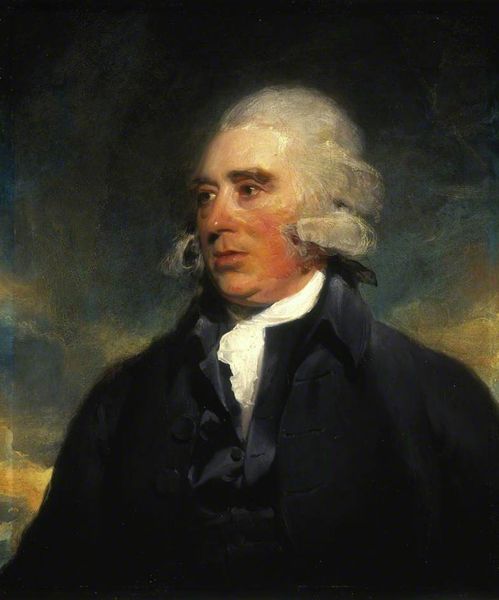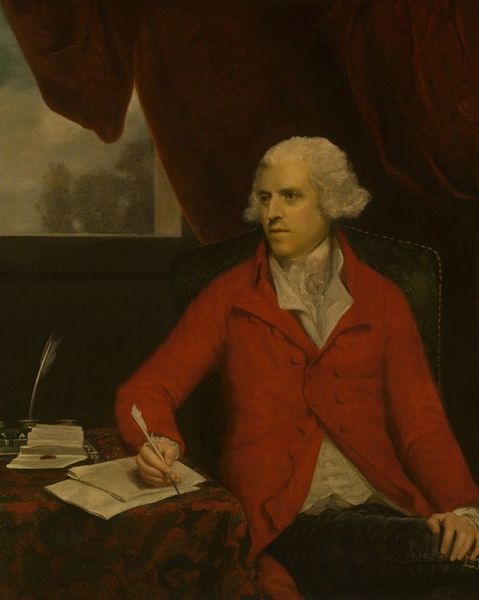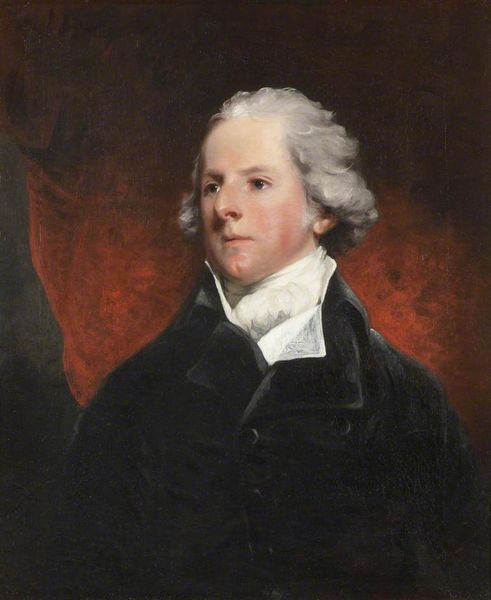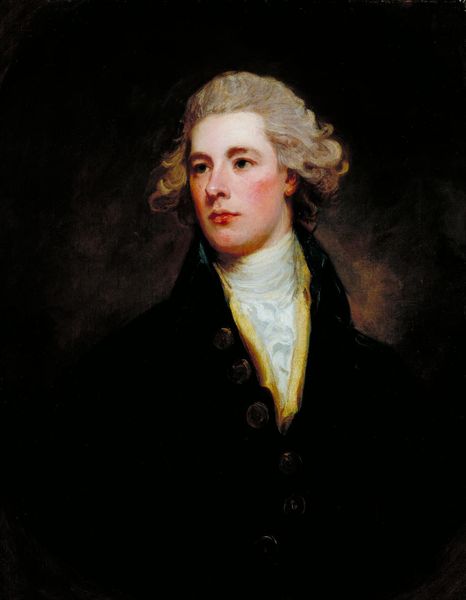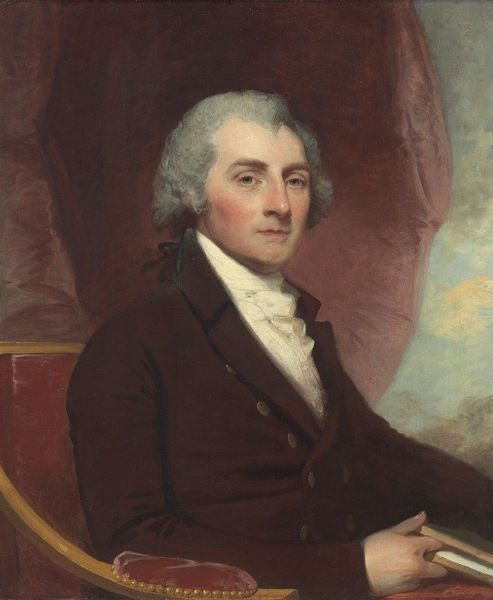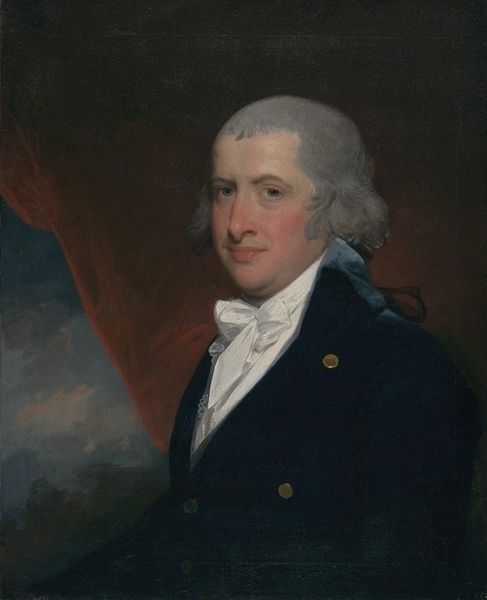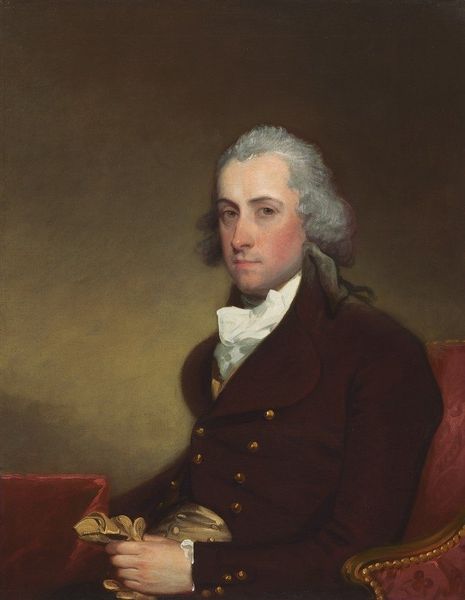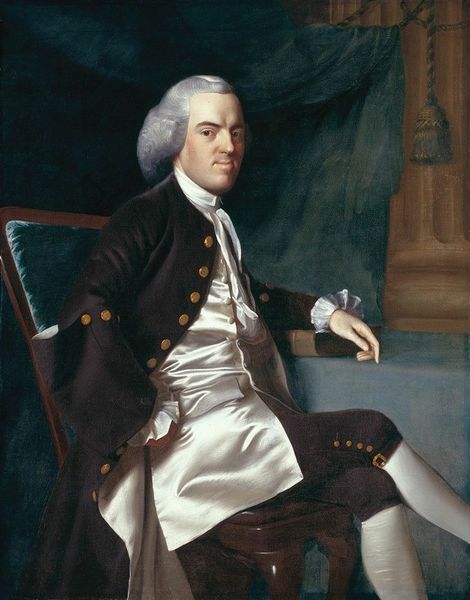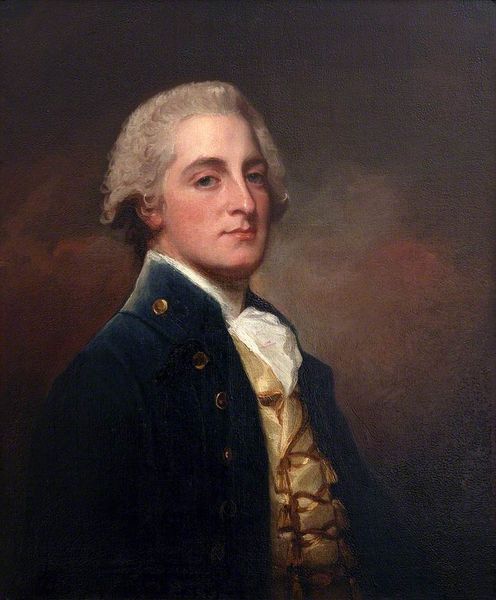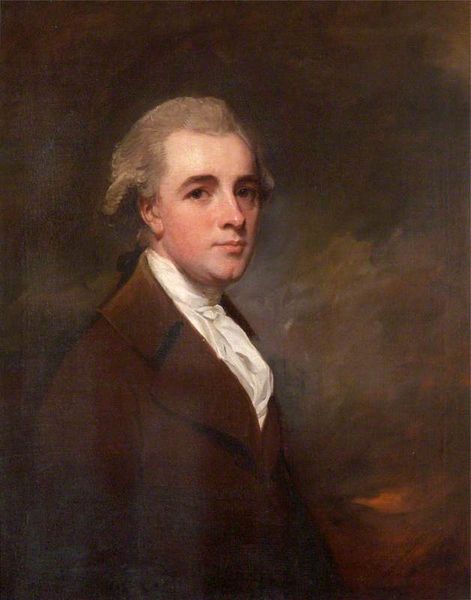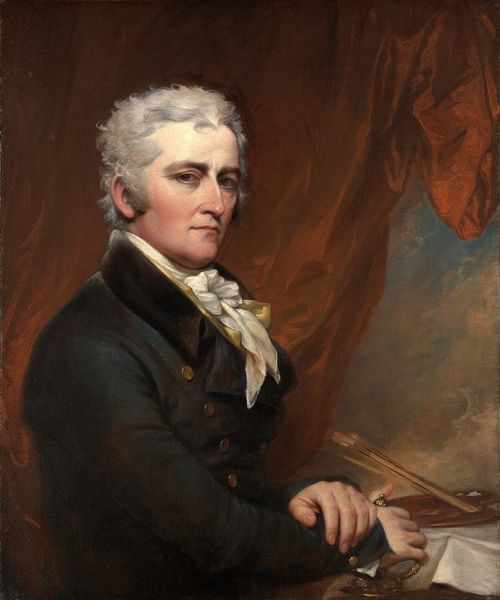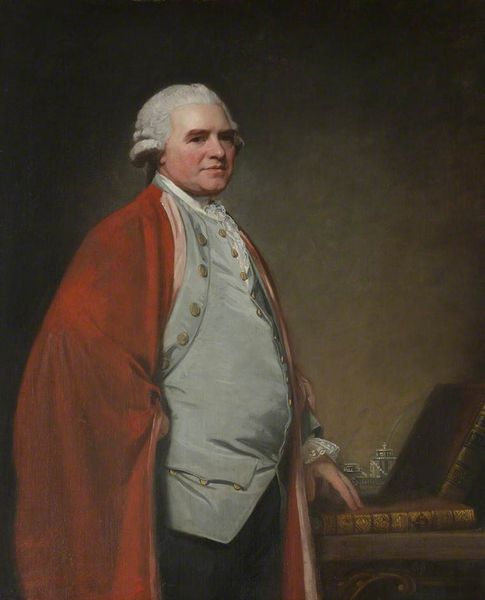
painting, oil-paint
#
portrait
#
neoclacissism
#
narrative-art
#
portrait
#
painting
#
oil-paint
#
romanticism
#
genre-painting
#
history-painting
#
academic-art
Copyright: Public domain
Curator: This is George Romney's portrait of John McArthur, a writer known for his work on naval topics. It was painted around 1795. My first thought is, what a perfect study in restrained energy! Editor: Restrained, certainly. Look at the palette – dark coat, muted background. You can almost smell the ink and paper in the piece; his labour seems close. Is that a goose quill, specifically? Curator: I believe so. Notice how Romney uses a classical structure within the portrait. McArthur's gaze is directed towards the viewer, but the composition is arranged to keep the eye moving. There's a subtle triangle formed by his head, the quill, and the inkwell. Editor: It's quite neat. But what of the context? McArthur's writings surely influenced policy and procurement related to the British Navy. One wonders about the paper source, about trade routes established and materials appropriated. Curator: An important point. Yet observe how Romney handles the light. It gently illuminates McArthur's face, drawing attention to his thoughtful expression. There is an understated sense of intellect present. He appears caught in the act of creation, with all its contemplative rigor. Editor: Precisely. Look closely and the layering becomes evident: The way the oil paint renders fabric's texture speaks of its tangible value. One cannot overlook what it signifies as part of production. That jacket had to be made and probably transported across water. Curator: A fitting thought when considering McArthur's professional interests. His engagement in naval matters speaks to British power, certainly; Romney reflects this sense through controlled execution and sober palette that suits his position. The symbolism is subtle yet commanding. Editor: Right; by appreciating the art production side we understand something more extensive here; that the navy wasn't all that shiny—labor and toil underpin the whole edifice that Romney politely renders. Curator: It’s a compelling reminder that formal elegance doesn't negate deeper questions concerning its subject. I now appreciate how seemingly restrained composition unlocks several distinct trains of inquiry. Editor: And how a focus on the tangible origins allows us new understanding; it encourages active participation rather than mere visual consumption—ultimately becoming quite potent!
Comments
No comments
Be the first to comment and join the conversation on the ultimate creative platform.
